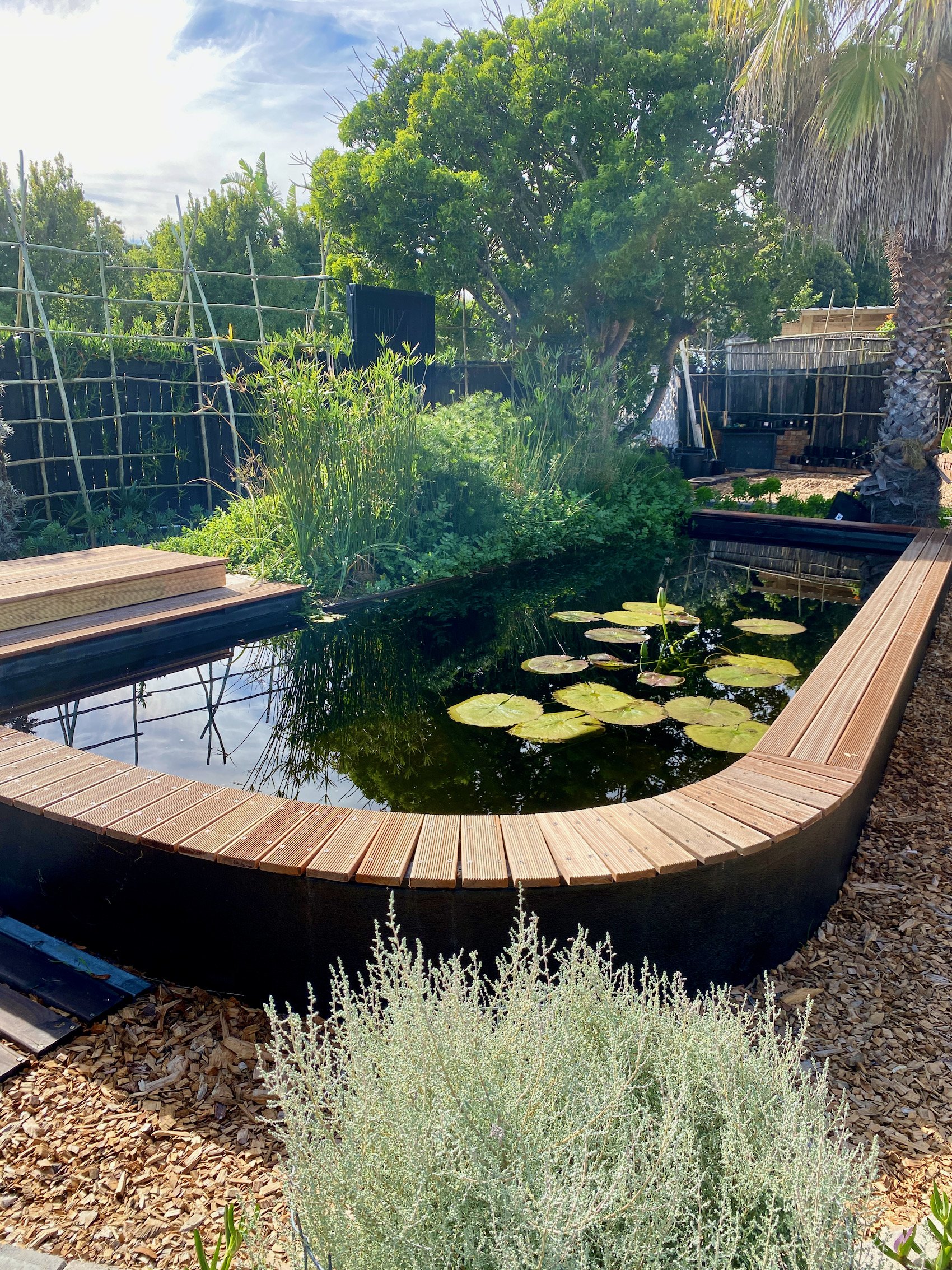
Floating Wetlands
A floating wetland is a floating structure about 150mm thick that is used as a planting medium for aquatic plants. A mini-ecosystem of submerged roots creates the perfect habitat for millions of microbes which then use carbon, excess nutrients, and algae in the water as their food source cleaning and restoring the water body.
Floating Wetlands in pools
Floating wetlands are excellent for converting existing chlorine pools into natural pools as you don’t even need to empty the pool. 35% of the pool’s surface area needs to be allocated to the floating wetland so provided you are happy to loose this surface area it is a very cost-effective approach.
PROS
Very cost-effective
Can be removed in future if required
Can utilize existing plumbing and pumps
Can be easily shaped or moulded to the sides or borders of pool
Low environmental impact (less cement, gravel etc.)
Water level can vary. This is important if you don’t plan to top the pool up in summer
You can retain your current kreepy krawley and sand-filter to keep the pool floor clean
Often the water in the pool can remain throughout the conversion
CONS
Takes longer to establish. It needs a one good growing season to mature and the pool will only reach a stable and clear state after that time.
No option but to lose 35% of the pool surface area
You will never get quite the same design freedom or aesthetic beauty as you do with a permanent wetland
EXAMPLESSwimming Pool Floating Wetlands






SWIMMING POOL FLOATING WETLANDSBefore & After
Floating wetlands are carefully inoculated with a patented blend of microbes and slow-release fertilizer in order to get good plant growth after one growing season.
Get a free quote to transform your pool.
If you would like to get a quote for a floating wetland conversion for your pool please drop us a message. Include your pool dimensions if possible and we can give you a quote without having to do a site visit. Installation can be done in under 3 days.

Floating Wetland in dams, ponds and waterways
Not only great in swimming pools, floating wetlands can also be used to restore ecological function in farm dams and urban waterways. A micro-ecosystem of submerged roots creates the perfect habitat for millions of microbes which then use carbon, excess nutrients, and algae in the water as their food source. This cleans and restores the water body.

CASE STUDYErinvale Floating Wetland
We recently installed 18sqm of floating wetland at Erinvale Golf Club on one of their dams. The floating wetland is designed to screen off a large floating irrigation pump. Previously we have only created wetlands that are anchored in place with one single anchor. This was a particularly challenging installation as we had to tether the wetland to an existing floating pump cage with a system of stainless steel rods.
The floating wetlands are far more than a screen though.
The floating island creates a natural sanctuary for spawning fish with underwater protection. It is a nice shady place for them to hide and many small fish feed off the micro-organisms that develop on the roots.
The floating wetlands create a habitat for nesting birds that is far away from the shoreline which exposes them to predators.
The floating wetlands also naturally clean the water by removing nutrients and pollutants this in turn creates a better habitat for all aquatic invertebrates, fish, birds, and wildlife.
The floating wetlands also create potentially valuable resting stops for migrating birds.






